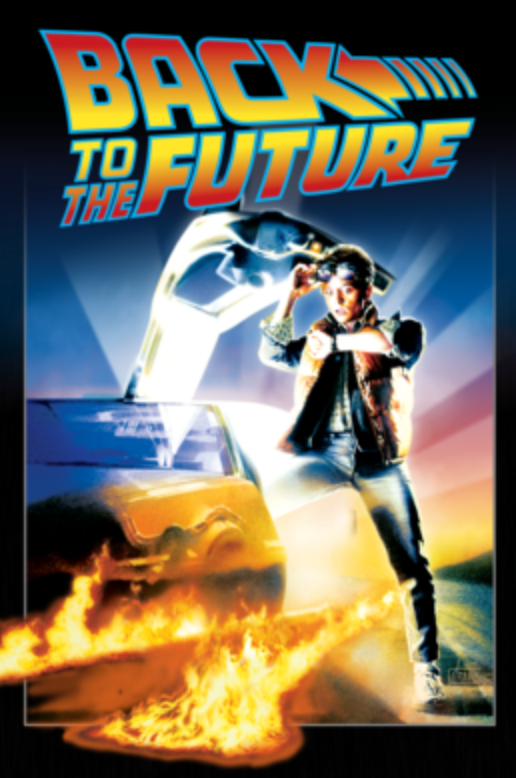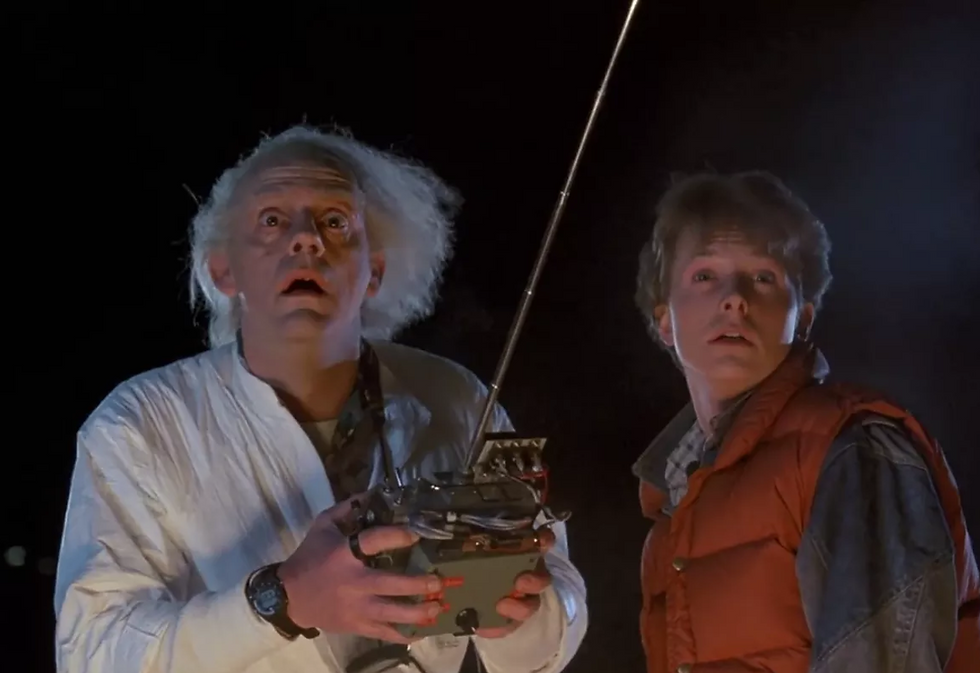The Apocalypse is Here, Week One: 80's Classics
- Indira Ramgolam, Staff Writer
- Mar 8, 2019
- 4 min read

Welcome to another film watch list series! This time, instead of a countdown, I will be serving up selections of science fiction paired artfully (enough) to a theme. Now, you might be wondering why science fiction, of all genres, was chosen. The very simple, very honest answer is that I want to expand my understanding of the genre, and I want to take along others for a journey if they’re interested in this too.
The inaugural week’s assemblage of films includes:
-Back to the Future (centerpiece)
-Bill and Ted’s Excellent Adventure
-Honey, I Shrunk the Kids!
-E.T. the Extra-Terrestrial
This week’s theme is 80’s Classics. I wanted to start with something that seemed more introductory level. To my understanding, a vast majority of these movies are the movies that young millennials and older gen-z kids grew up on. There are probably many more 80's films that I’m not including that are also sci-fi themed and inspire a sort of nostalgia, but these are the films that comprised my childhood.
Back to the Future, directed by Robert Zemeckis, follows high-school teenager Marty McFly (Michael J. Fox) and his friendship with older, absent-minded scientist Dr. Emmett Brown (Christopher Lloyd) as well as his relationship with his girlfriend Jennifer (Claudia Wells) and his family. His knowledge of his family becomes more intimate when, through a turn of events, Marty is sent back through time to the 50s and meets his mother Lorraine (Lea Thompson), father George (Crispin Glover), and his father’s childhood bully Biff Tannen (Thomas F. Wilson). Marty and Doc Brown race against the clock to fix his parent’s relationship before his very existence is undone – as well as to get him back to the “future” where he belongs. Released in 1985, this film won the Academy Award for Best Sound Editing and was nominated for three other Oscars, going on to be the highest grossing film of the year.
The first thing I have to note is the great 80s visuals. Obviously, this is because it’s an 80s film, but this is of note simply because there is a quality that cannot be mimicked in today’s movies. The soundtrack can sport the music, and the characters can speak the lingo, but the 80s will not come back. Furthermore, I note the 80s visuals – or perhaps, the visuals in general – of this movie because it influenced society so strongly. I don’t even drive and I would probably sell my soul in order to own a DeLorean. I’m sure it’s not the first example of hover-boards in film, but it is a more recognizable one. Pepsi Perfect even became a genuine product in order to celebrate Back to the Future Day in 2015. Just don’t get me started on the Pepsi Perfect Fiasco.

The problems engineered for Marty and Doc Brown seem very realistic at first glance (within their context, of course). The film excels at making twenty-four year old Michael J. Fox seem like a teenager. From his complaints about the clocks being set behind and how that affects his tardy record to him accidentally breaking up his parents before they can even meet, the film retains a strong sense of reality and believability for such a strange storyline.
Upon digging deeper, however, things get weird. How did Marty and Doc Brown meet in the first place? I’m sure this is the subject of a John Mulaney sketch or some other humorous commentary, but this is a genuine question of mine. If Marty was a college student, or a science whiz kid, or even an intern, this would make sense, but it is difficult for me to ever see them meeting, let alone getting along. This really isn’t that important, but it’s something I’ve been wondering about for quite some time. The unlikeliness of their relationship does make me question some of the problems they face, but it is also that sheer lack of reality that keeps the film from being too intense.
The comedic tone of the film, as well as the strangeness of the whole situation, allows Back to the Future to be a much more joyful science fiction movie than usually seen today. Although the time travel is driven by dark circumstances, the colorful lights of the time display and the knowledge that the DeLorean runs on radioactive power brings a zaniness to the whole situation that lightens the intensity beautifully. Being able to compare and contrast the modern city to the city in the 50’s does more than just present the idea that McFly’s time traveling journey was a success. It gave the audience a visual feast of vintage vibes powerful enough to satisfy any cravings for the Nifty Fifties. Plus, the self-aware wire-crossing of modern sci-fi references pokes fun at its own time period. Darth Vader from Planet Vulcan, anyone?
I would hate to let it seem as if my childhood nostalgia made me view the film through rose-colored goggles. The whole situation with Marty and his interactions with his young mom was uncomfortable to watch. Even though it was intentionally so, it was just a little too much for me. Worse yet was the idea that Marty McFly was the inspiration for Chuck Berry’s “Johnny B. Goode,” although the lovability of Marvin Berry and the Starlighters was far more memorable than the implications of that scene. Still, even with all the “bad,” it holds its own and even contributes to the timeline of films centering on time-travel. Back to the Future spawned three films, a now-defunct ride (RIP Doc Brown’s Institute), an animated television series, comic books, novelizations, video games, and even a stage musical. Well, to be honest, the news on that last one makes the likelihood of its production seem iffy at best. Comparing this film and its legacy to the impact of Bill and Ted’s Excellent Adventures would be a blast. Unfortunately, it seems that I’m “outta time.”
We may have avoided the oncoming apocalypse so far, but be prepared for next time: Philip K. Dick, Part One.
Indira Ramgolam is a freshman in Columbia College.

Comments